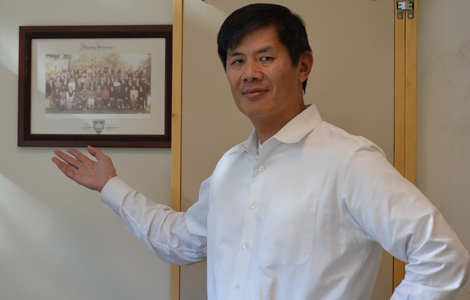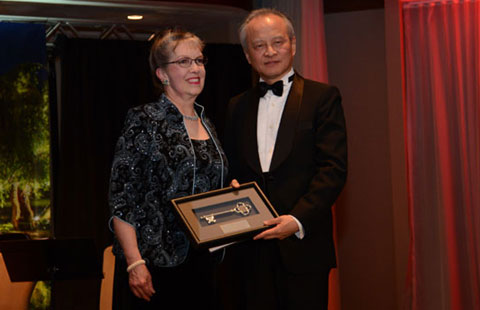A move to liberate market
Updated: 2014-02-10 07:59
By Chi Fulin(China Daily)
|
||||||||
No country has developed into a middle-income society, let alone a high-income one, by refusing to follow the rules of market economy. China realized that long ago and cultivated the market to break free from the restraints of planned economy to become a middle-income country.
The contradictions and problems that have emerged during the course of China's economic and social development are not the product of excessive marketization, as some people claim, but the result of its failure to launch sweeping market reforms. At a time when market players were not fully developed, the government-dominated resource distribution system did drive China's high-speed growth. But such a growth model has revealed more disadvantages than advantages and thus needs to be changed by keeping an eye on longer-term economic benefits.
By allowing the market to play a decisive role in the resource distribution, China aims to pursue a more efficient and sustainable development path. With a population of 1.3 billion, China's consumption demand is expected to reach 30 trillion yuan ($4.95 trillion) by 2016 and increase to 45-50 trillion yuan by 2020. The investment demand driven by such a colossal consumption demand is expected to reach up to 100 trillion yuan, which is likely to become the main driver of China's 7 percent annual growth in the coming decade.
But the conversion of such a huge potential demand into economic growth depends on the degree of market reforms. To take advantage of this market potential, China needs to transform itself from an investment-led to a consumption-driven economy and bring its investment structure in line with its social demand structure. It also needs to reduce, preferably stop, low-efficient investments, increase investments that suit market demands and strike a balance between investment and consumption.
To play a decisive role in resource distribution, however, the market needs competitive and vigorous microeconomic entities, equitable competition and an effective pricing mechanism. The lack of fair competition in the past decades has to some extent lowered the equity and efficiency of resource distribution and distorted the pricing mechanism.
To let the market determine the distribution of resources is to allow the supply-demand law to decide the prices of not only commodities but also the means of production. China's existing market framework, which is obviously influenced by the government, has resulted in the undervaluation of resources and thus fueled the expansion of low-cost investment, aggravating environmental deterioration and overproduction. The establishment of a market-oriented resource distribution model, in which the prices of resources would reflect the degree of their scarcity, would prevent overproduction and facilitate China's long-overdue economic transformation.
China is a developing nation in transition, so the government still has an important role to play in its economic development. But while playing its part, the government should respect the market's decisive role in resource distribution.
Given that the efficiency of the market's decisive role in resource distribution depends on the establishment of the rule of law, China will launch legal reforms. And since the establishment of a marketized resource distribution model also depends on government transparency, China will also be prompted to launch institutional reforms.
The author is president of China Institute for Reform and Development.

 Music at her fingers
Music at her fingers
 Across America Over the Week (Jan 16 - Jan 22)
Across America Over the Week (Jan 16 - Jan 22)
 Spend Chinese New Year in style
Spend Chinese New Year in style
 Ili river valley becomes a popular destination for swans
Ili river valley becomes a popular destination for swans
 Philip Ma: from scientist to businessman
Philip Ma: from scientist to businessman
 Birmingham's Spotlight on China dinner
Birmingham's Spotlight on China dinner
 How to distinguish doucai, wucai, Famille-rose and enamel porcelain
How to distinguish doucai, wucai, Famille-rose and enamel porcelain
 Xinjiang lake in bumper fishing season
Xinjiang lake in bumper fishing season
Most Viewed
Editor's Picks

|

|

|

|

|

|
Today's Top News
Houston's SW Chinatown
China to focus on reforms, opening of capital market
Slowdown brings new risks to banks
Trade group calls for BIT
Market status for China is 'political' issue
Birmingham's Spotlight on China dinner
Bank takes renminbi-clearing seriously
Traditional Garb
US Weekly

|

|








